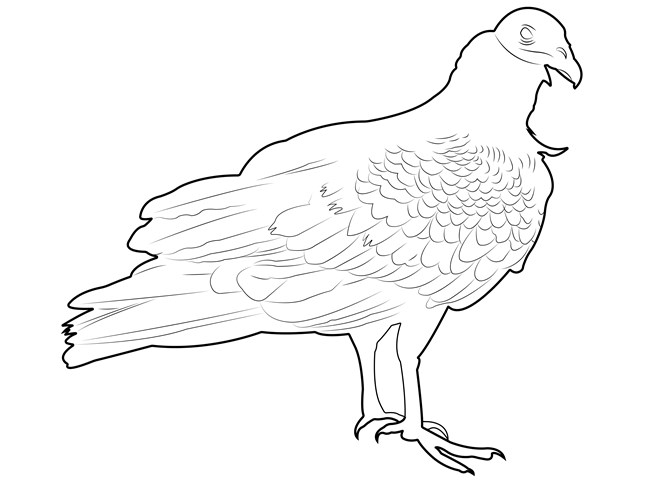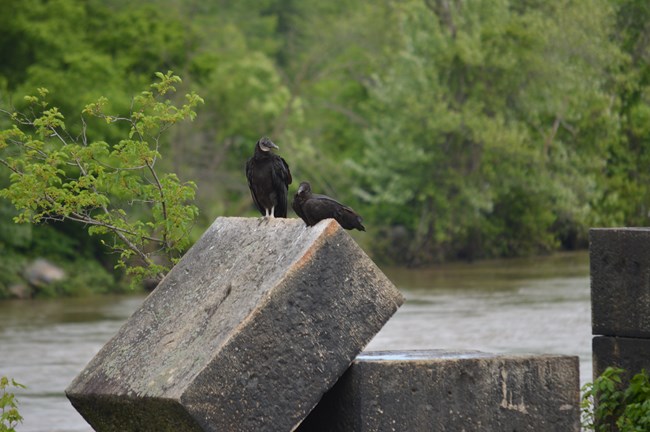|
NPS.gov / Park Home / Learn About the Park / Nature / Animals / Birds / Birds of Prey 
NPS/Intern Tristan Thomas Turkey Vulture (Cathartes aura)• Turkey Vultures eat dead animals which they are able to find because they have an excellent sense of smell. They mainly like to eat mammals but will also eat reptiles, other birds, amphibians, and fish.• Turkey Vultures soar through the sky with their wings raised in a V and they make wobbly circles as they fly (their wingspan is large and impressive and they are often mistaken for an Eagle or an Osprey) • They love to fly through open areas like farmland, forest, and rangeland and at night they like to stay in trees, rocks, or other high and private spots • A group of vultures is called a committee, venue or volt. In flight, a flock of vultures is a kettle, and when the birds are feeding together at a carcass, the group is called a wake. Identification Information:• Size: Goose sized or larger (Large)• Color: they appear black from a distance but up close are brown. They have a featherless head 
NPS Photo/A. Cook Black Vultures (Coragyps atratus)• Black Vultures don’t have the great sense of smell that Turkey Vultures possess. To find food they fly higher in the sky than Turkey Vultures and follow them to food sources.• They eat very similarly to Turkey Vultures and mainly eat dead, decaying carcasses • Black Vultures don’t have a voice box so they only make hissing sounds and grunts • Black Vultures like to nest in dark spaces like caves, hollow trees, abandoned buildings, and more. • These birds are monogamous and stay with their mates for many years Identification Information:Size: Goose sized or larger (Large)Color: All black except for white patches on the underside of their wings. Their bare skin on their head is also black. 
NPS Photo/G. Best
All of the above information is an abbreviated version of information gathered from the Cornell Lab of Ornithology. Please visit their website for more in-depth bird information.
|
Last updated: September 13, 2019
